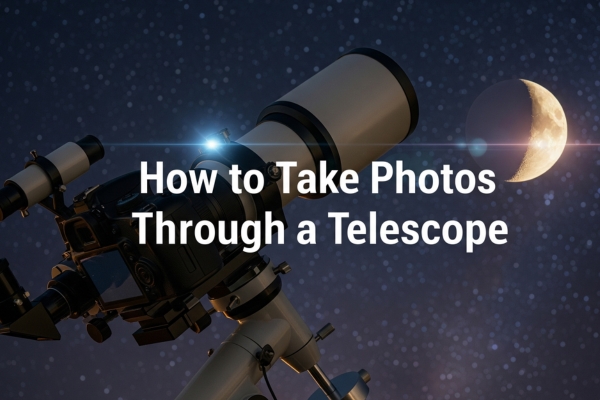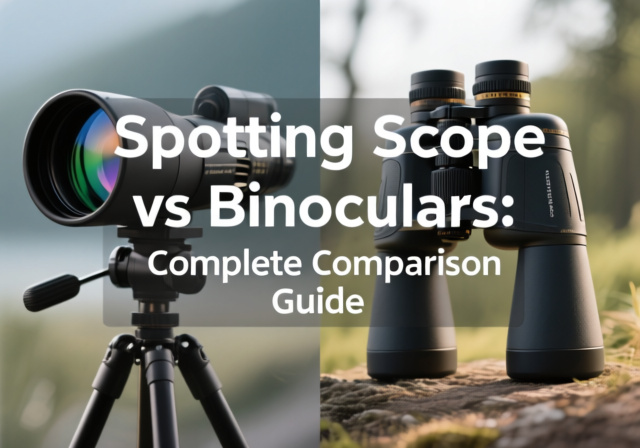



Aries constellation represents one of the most recognizable patterns in the night sky, holding a special place as the first sign of the zodiac. This constellation, depicting a golden ram, has captivated observers for thousands of years. Located between Pisces and Taurus in the northern celestial hemisphere, Aries might be small in size but packs enormous historical and astronomical significance.
Aries is a zodiac constellation in the northern sky, representing a ram from Greek mythology. It’s the 39th largest constellation, covering 441 square degrees, and contains notable stars like Hamal, Sheratan, and Mesarthim. Despite its modest size, Aries has played a crucial role in astronomy as the former location of the vernal equinox.
As a constellation that marks the beginning of the astrological year, Aries has influenced cultures worldwide. From ancient Babylonian astronomers who first recorded its stars to modern astronomers discovering nearby exoplanets, this constellation continues to reveal new secrets. In this comprehensive guide, I’ll share everything you need to know about Aries, from practical observation tips to fascinating mythology and recent scientific discoveries.
Whether you’re a beginner astronomer trying to spot your first constellation or an experienced stargazer looking to deepen your knowledge, Aries offers something unique for everyone. I’ve spent countless nights observing this constellation from various locations, including challenging urban environments, and I’ll share practical insights that go beyond basic facts.
Aries may appear simple with just a few bright stars, but each has unique characteristics that make this constellation special. The main asterism forms a distinctive curved line that resembles a ram’s horn, making it identifiable once you know what to look for.
The constellation’s brightest stars tell a story of stellar diversity. Hamal, the orange giant, dominates the constellation with its warm golden glow. This star, aging and expanding, once marked the vernal equinox around 1000 BCE. Sheratan, slightly dimmer but still prominent, is actually a binary star system where two stars orbit each other so closely they appear as one. Mesarthim, another fascinating binary, was one of the first double stars discovered telescopically in 1664.
| Star Name | Magnitude | Distance (light-years) | Type | Notable Features |
|---|---|---|---|---|
| Hamal (Alpha Arietis) | 2.02 | 66 | Orange Giant | Former equinox star, 15x Sun’s diameter |
| Sheratan (Beta Arietis) | 2.64 | 59 | Binary Star | Spectroscopic binary, 5-day orbit |
| Mesarthim (Gamma Arietis) | 3.9 | 164 | Binary Star | Double star discovered 1664 |
| 41 Arietis (Bharani) | 3.63 | 165 | Blue-white Star | Fourth brightest, high rotation speed |
| Delta Arietis (Boteïn) | 4.35 | 170 | K2 Class Star | Orange-hued, traditional star name |
Beyond these visible stars, Aries hosts some remarkable nearby stars invisible to the naked eye. Teegarden’s Star, just 12.5 light-years away, is one of our closest stellar neighbors. This dim red dwarf hosts two potentially habitable exoplanets discovered in 2025, making it a target for SETI research. Another nearby system, TZ Arietis at 14.6 light-years, demonstrates how Aries contains some of our closest cosmic neighbors despite its unassuming appearance.
When observing Aries stars, I’ve found that binoculars reveal subtle color differences between them. Hamal’s orange hue becomes apparent even with modest magnification, while Sheratan shows a blue-white tint. The contrast between these colors creates a beautiful visual demonstration of stellar classification in action.
The story behind Aries constellation comes from one of Greek mythology’s most dramatic tales. It begins with King Athamas of Boeotia, whose marriage to Nephele (a cloud nymph) produced two children: Phrixus and Helle. When Athamas abandoned Nephele for the princess Ino, trouble began.
Ino, jealous of the king’s children, plotted to eliminate them. She roasted all the kingdom’s grain seeds so they wouldn’t grow, leading to famine. When Athamas sent messengers to consult the Oracle at Delphi, Ino bribed them to return with false news: the famine would end only if Phrixus were sacrificed.
As Athamas prepared the sacrifice, Nephele prayed to Zeus for help. In response, Zeus sent a magnificent golden ram with a fleece that shone like the sun. This ram appeared suddenly, swooping down to rescue Phrixus and Helle. The children climbed aboard, and the ram flew eastward toward safety.
During their flight, Helle became dizzy and fell into the sea below. The strait where she fell became known as the Hellespont (modern Dardanelles). Phrixus continued safely to Colchis, where he sacrificed the ram to Zeus in gratitude.
Zeus honored the ram by placing it among the stars as the Aries constellation. The golden fleece, however, became legendary. Years later, Jason and the Argonauts would embark on their famous quest to retrieve this fleece, connecting Aries to one of mythology’s greatest adventures.
This mythology explains why Aries represents new beginnings and sacrifice. The constellation’s position as the first sign of the zodiac connects to themes of renewal and the start of the agricultural year in ancient cultures.
Finding Aries can be challenging due to its relatively dim stars, but with the right approach, it becomes accessible even to beginners. The best time to observe Aries is during December evenings when it reaches its highest point in the sky around 9 PM.
To locate Aries, I recommend starting with the Pleiades star cluster in Taurus. From there, scan westward about 30 degrees. Look for a small but distinctive pattern of three stars forming a gentle curve – this is the main asterism of Aries. The curve resembles a ram’s horn, with Hamal marking one end and the other stars forming the arc.
Observing from city locations presents challenges, but I’ve successfully spotted Aries from multiple urban areas. Here are strategies that work:
For the best Aries viewing experience, I suggest:
Remember that Aries is a winter constellation in the northern hemisphere. Dress warmly, bring a red flashlight to preserve night vision, and be patient. The satisfaction of finding this modest but historically significant constellation is worth the effort.
While Aries lacks the dramatic nebulae of some constellations, it hosts several interesting deep sky objects worth exploring. These distant objects challenge observers and reward those with patience and proper equipment.
The crown jewel of Aries deep sky objects is NGC 772, known as the Fiddlehead Galaxy. This spiral galaxy, 130 million light-years distant, shines at magnitude 10.3. Through a telescope, NGC 772 reveals unusual spiral arm structure disrupted by gravitational interactions. Its companion galaxy, NGC 770, appears nearby, creating a stunning visual pair through larger amateur telescopes.
Several other galaxies await patient observers:
For those with astrophotography setups, these galaxies offer excellent targets. The Fiddlehead Galaxy, in particular, reveals intricate detail in long-exposure images, showing its distorted spiral arms and companion galaxy.
Aries serves as the radiant point for several meteor showers, though most are modest in activity. The most notable is the Daytime Arietids, which despite being active during daylight hours, ranks among the strongest meteor showers annually.
The Daytime Arietids peak around June 7, with activity from May 22 to July 2. This shower produces up to 54 meteors per hour at its peak, but since it occurs during daylight, visual observation is impossible. Radio astronomers, however, regularly detect these meteors as they burn up in Earth’s atmosphere.
Other showers from Aries include:
While most Aries meteor showers won’t provide spectacular visual displays, they remind us that the constellation remains active throughout the year, not just when we can see its stars.
Aries continues to reveal new secrets to modern astronomers. Perhaps the most exciting discovery involves Teegarden’s Star, a dim red dwarf just 12.5 light-years away. In 2025, astronomers confirmed two Earth-sized exoplanets orbiting this star within the habitable zone – where liquid water could exist on their surfaces.
These planets, designated Teegarden’s Star b and c, have masses similar to Earth and orbital periods of 4.9 and 11.4 days respectively. Their proximity and potential habitability make them prime targets for the James Webb Space Telescope and future instruments searching for biosignatures.
Other recent discoveries in Aries include:
These discoveries demonstrate how even small constellations like Aries contain worlds that might harbor life. As detection methods improve, we’ll likely discover more planets in this region of space, potentially including some with conditions suitable for life as we know it.
Aries is special as the first sign of the zodiac and formerly marked the vernal equinox. It contains nearby stars with potentially habitable exoplanets and hosts one of the strongest daytime meteor showers. Its mythology about the golden ram connects to one of Greece’s most famous adventures – Jason’s quest for the Golden Fleece.
Aries gets its name from Latin, meaning “ram.” The name comes from Greek mythology about a golden ram sent by Zeus to rescue Phrixus and Helle from their evil stepmother Ino. After Phrixus safely reached Colchis, he sacrificed the ram to Zeus, who then placed it among the stars as the Aries constellation.
The best time to see Aries is during December evenings in the northern hemisphere. The constellation reaches its highest point around 9 PM during this month. It’s also visible from October through February, though December offers optimal viewing conditions when Aries appears highest in the sky.
Hamal (Alpha Arietis) is the brightest star in Aries with a magnitude of 2.02. It’s an orange giant star 66 light-years from Earth, about 15 times larger than our Sun. Hamal’s distinctive orange color makes it identifiable even in light-polluted skies when using binoculars.
The “First Point of Aries” was the location where the Sun crossed the celestial equator at the vernal (spring) equinox around 1000 BCE. Due to Earth’s precession, this point has moved into Pisces, but the historical significance remains. Aries’ position as the traditional marker of spring’s beginning makes it important in both astronomy and astrology.
Yes, Aries contains at least 11 stars with known exoplanets. The most exciting is Teegarden’s Star, which hosts two Earth-sized planets in its habitable zone just 12.5 light-years away. Other systems like HD 12661 and HIP 14810 contain multiple gas giant planets discovered in recent years.
After observing Aries constellation from various locations over the years, I’ve found that its modest appearance hides remarkable depth. This constellation rewards patient observers with connections to mythology, nearby potentially habitable worlds, and a rich history spanning thousands of years.
Whether you’re just beginning your astronomy journey or expanding your constellation knowledge, Aries offers something special. Start with the three main stars to learn the pattern, then explore deeper with binoculars or a telescope. Consider timing your observations for December evenings when Aries reaches its highest point, and don’t forget to look for the subtle color differences between Hamal and Sheratan.
The universe constantly reveals new wonders, and Aries constellation continues to contribute to these discoveries. From ancient observers who marked the coming of spring by its rising to modern astronomers finding potentially habitable worlds within its boundaries, Aries reminds us that even the smallest patterns in our night sky contain cosmic significance worth exploring.







